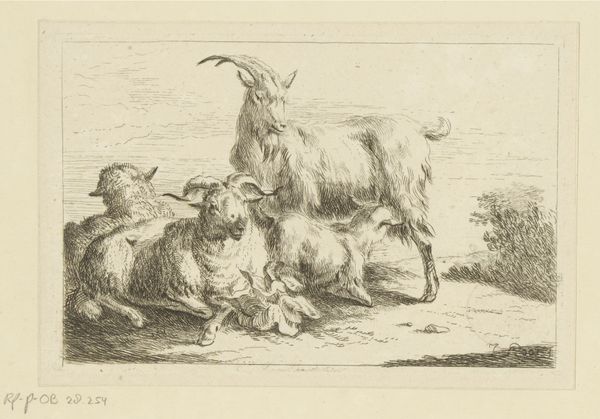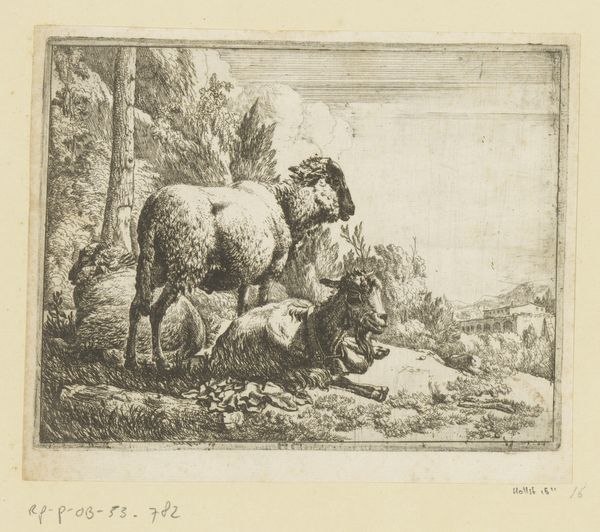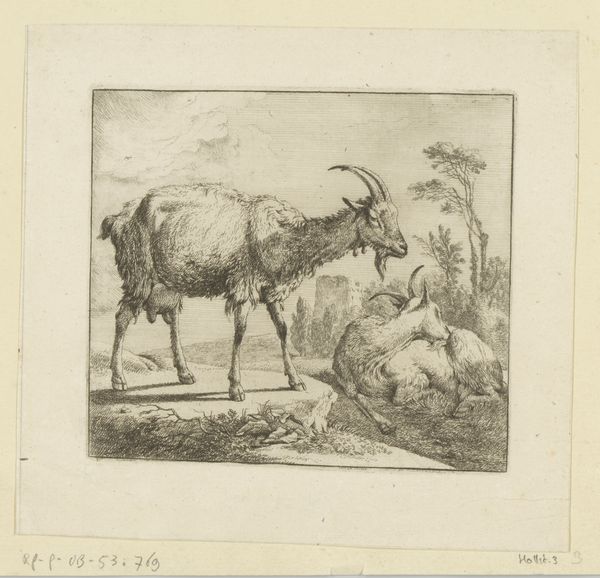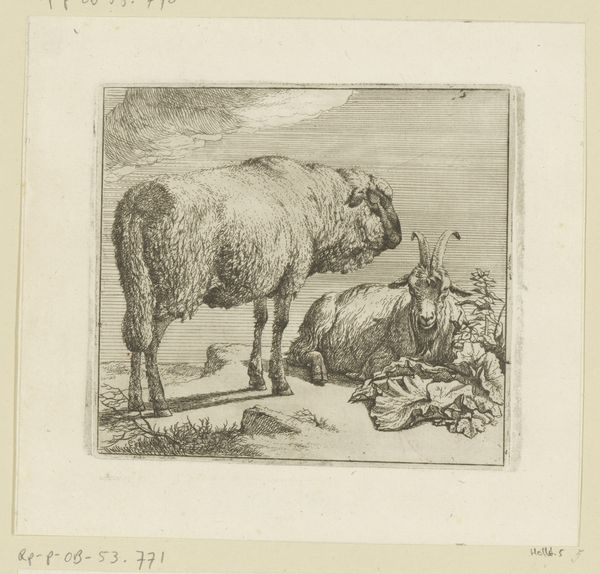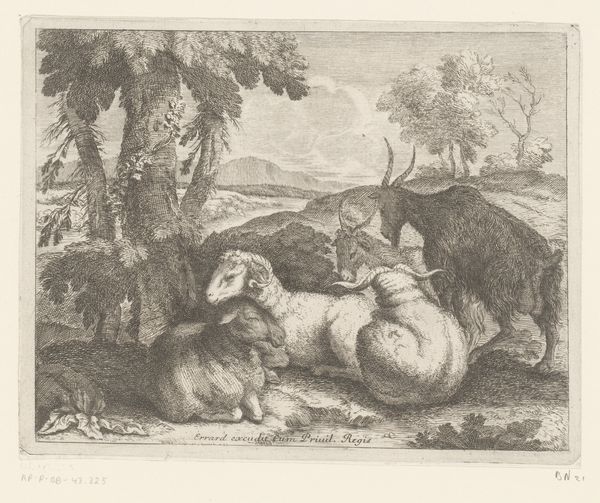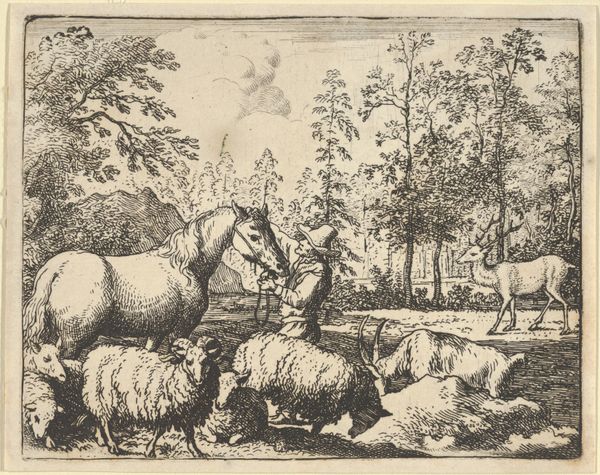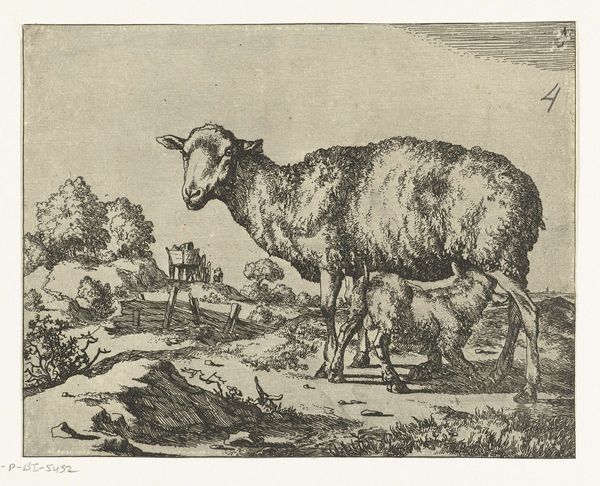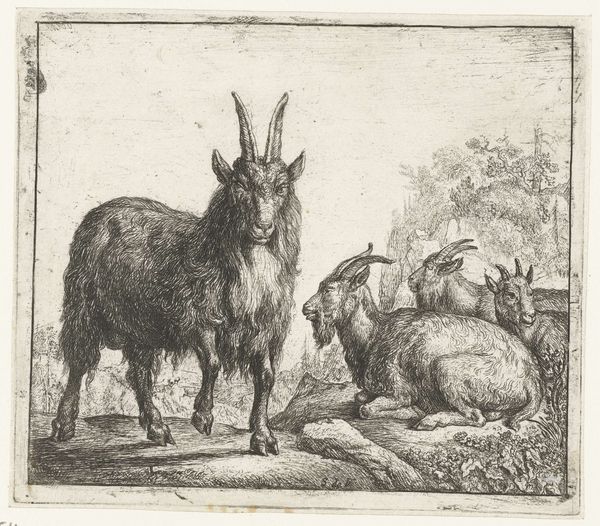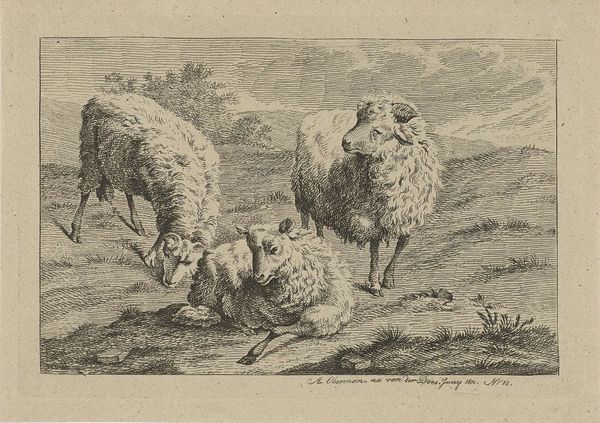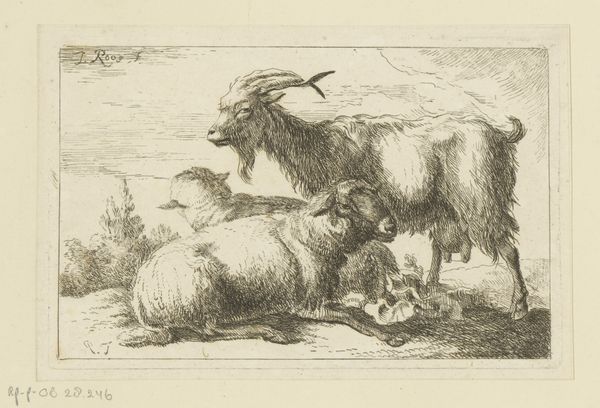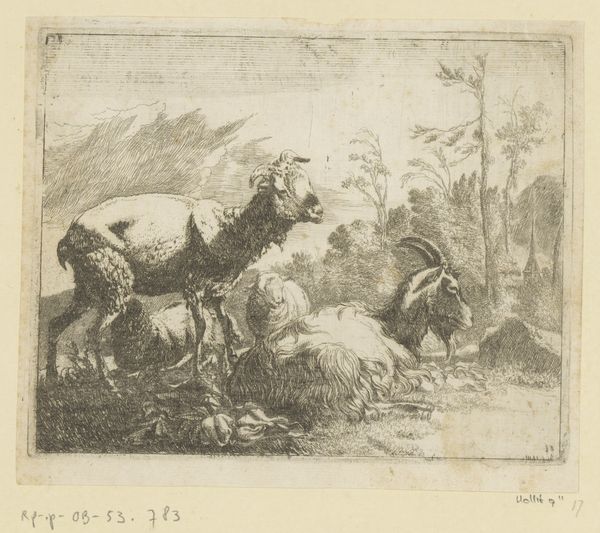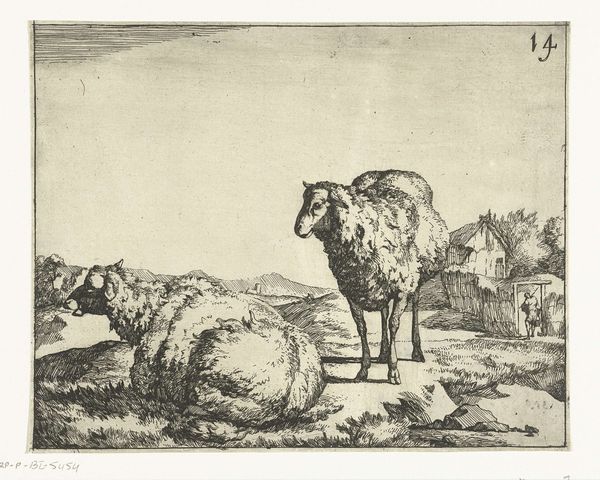
print, etching
#
baroque
#
animal
# print
#
etching
#
landscape
Dimensions: height 131 mm, width 144 mm
Copyright: Rijks Museum: Open Domain
Curator: This etching, titled "Liggend schaap en staande geit bij een hek," or "Lying Sheep and Standing Goat by a Fence," was created by Johann Heinrich Roos in 1671. It’s part of the Rijksmuseum's collection. Editor: It's immediately striking how pastoral and serene it feels. The way the goat seems to stand guard over the sheep... There’s almost a tenderness, wouldn't you agree? Curator: Perhaps, but consider the composition. The linear precision of the etching creates distinct forms. Look at how Roos defines space and volume with line alone, particularly in the textures of the animals’ coats and the rough-hewn fence. Semiotically, these details speak to the artist’s masterful control of his medium. Editor: Indeed, his technique is superb. But within that technical mastery, I can't help but see reflections of the socio-economic conditions. Livestock represented livelihood and sustenance during the Baroque period, speaking to issues of survival, perhaps even social mobility through animal husbandry. How did ownership dynamics then affect marginalized groups? Curator: That’s one way to read it, yes. Yet, focusing solely on socio-economic contexts risks overlooking the formal aspects. Note how the light falls. Roos subtly emphasizes the contrasts, giving the image a striking, near-sculptural quality within a two-dimensional form. Editor: Of course, the aesthetic choices are compelling, but shouldn't we also consider how idealized portrayals of rural life served to mask the harsh realities of labor and unequal distribution of resources? Perhaps the fence acts not as a marker of ownership but of social division... Curator: I see your point about its social interpretation. I am, however, drawn to the artist’s deliberate choice to place the animals off-center. By doing this, and by employing asymmetrical framing, the artwork guides our eyes to roam freely, inviting visual exploration and ensuring our gaze lingers on every minute stroke. Editor: Ultimately, I find this piece intriguing because of its layered narrative – both formally elegant and resonant with the muted cries for equality within its deceptively quiet scene. Curator: It reminds us how much richness exists within the quiet study of form and deliberate design; a composition that uses sparse lines to present dynamic interplay between animal, object and surrounding light.
Comments
No comments
Be the first to comment and join the conversation on the ultimate creative platform.
